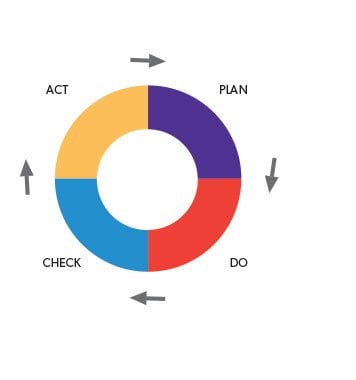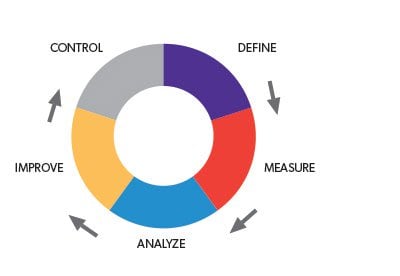
Good problem solving skills are fundamentally important within an organization. However, problem solving is not universally considered “easy.” Problem solving involves change. And people resist change because simply, it is not comfortable.
At its essence, problem solving is about identifying the problem, analyzing data to determine the root cause, identifying and implementing a solution and then monitoring the process to ensure the solution remains implemented and that it does not cause more problems.
Nonetheless, Tom Ault, Director of Technical Training at ERC, says “Change is exciting when it is done by us, but it is threatening when it is done to us.”
We spoke with Ault about the various problem solving methodologies and the fact that there is no one best methodology. But let’s first dive into the basics. What is a problem?
A problem is the difference between the current situation and the standard or goal. Without the identification of this “desired state,” there really is no way to identify if a problem exists.
Problem Solving Skills
To succeed in problem solving skills, a person needs:
- Creative thinking skills and attitudes to generate new ideas to adapt to a changing environment.
- Critical thinking (analytics) skills and attitudes to ascertain whether his/her or others’ ideas are good ones.
- Practical thinking (innovation) skills and attitudes to implement the ideas and persuade others of their values.
At the beginning of problem solving, creative methods are used to examine the problem environment, generate ideas, and make associations.
Then, the analysis and judgement are brought into play, and the possibilities are analyzed for a possible solution. Both types of thinking aim at the same goal, which is to solve the problem.
And lastly, practical thinking takes over as the solution will need to be implemented. A “best” solution will not be effective if it is not practically implemented. Practical often means involving the people who will be tasked with making the solution work.
In order to solve a problem, Ault says you must:
- Have a methodology in place. Pick one that will best suite your organization and then train and standardize on that methodology.
- Have a tool kit. By having the tools in place to carry out the methodology, your organization will be more apt to succeed.
“Methodologies are important because they keep it consistent across the board. When a problem arises, no one is just guessing what the best way to solve it is. Instead, everyone is under the same understanding of how to go about solving the problem,” says Ault.
Ault notes that is it very important to have consistency when solving a problem. “The alternative to solving a problem and not using a methodology is it could end up being a different method every time. There is no consistency, which ultimately doesn’t allow for better solutions.”
Instead of reacting to a problem right away, Ault says it’s important to gather data, use your methodology of choice, investigate the problem and come up with a solution.
So how do you choose a methodology that will work for your organization? Here are just some examples of popular methods.
PDCA
One of the simpler types of methodologies is PDCA (plan-do-check-act). It’s a four-step management method used in business for the control and continuous improvement of processes and products.

- Plan: Here is where you would define the problem, and then analyze the problem to determine the root cause. Questions to answer would be “what, where, when, how much, how long?”
- Do: In this step, you develop and implement a solution. The question to answer would be, “what is the best possible solution that will reduce or eliminate the root cause within our timeframe?”
- Check: This is where you evaluate the effectiveness of the solution. It is important that this step be as close to the implantation as possible so feedback can be provided quickly. The question to answer would be, “does the solution appear to be working?”
- Act: In this step, you want to tweak the initial solution if needed or standardize the initial solution if effective. Questions to answer here would be, “are there tweaks to the original solution that would make it more effective and how do we standardize the solution?”
DMAIC
As part of the Lean/Six Sigma methodology, DMAIC (Define, Measure, Analyze, Improve and Control) refers to a data-driven improvement cycle used to improve, optimize and stabilize business processes and designs.

- Define the problem, the team that will be assigned and the scope of the project
- Measure the performance of the process
- Analyze the data to determine the root cause
- Improve performance by implementing solutions to reduce or eliminate the root cause.
- Control the implementation of the solution to ensure continued and sustainable success
Additional methodologies organizations can consider include:
- Eight Disciplines (8D)
- TRIZ
- Five Step Problem Solving
- Eight Step Problem Solving

Six Sigma Training Program
This improves the quality of a company’s outputs by identifying and removing the causes of defects.
